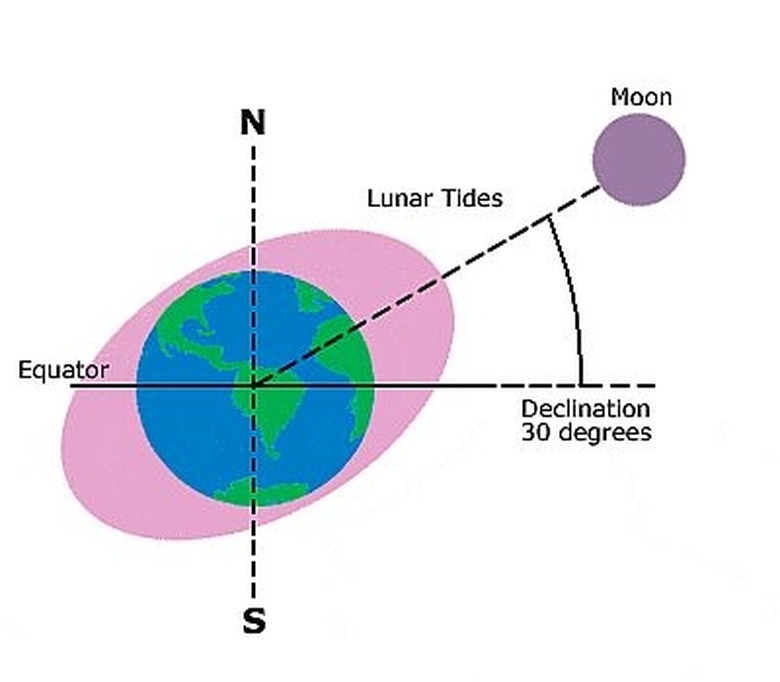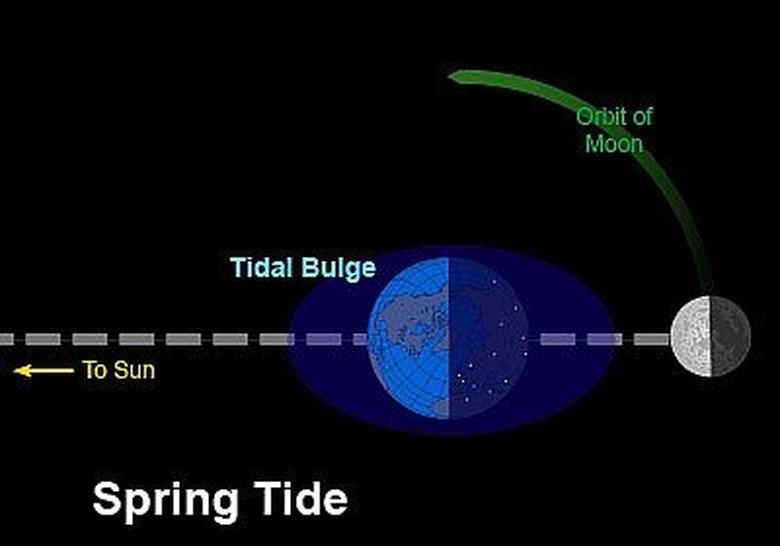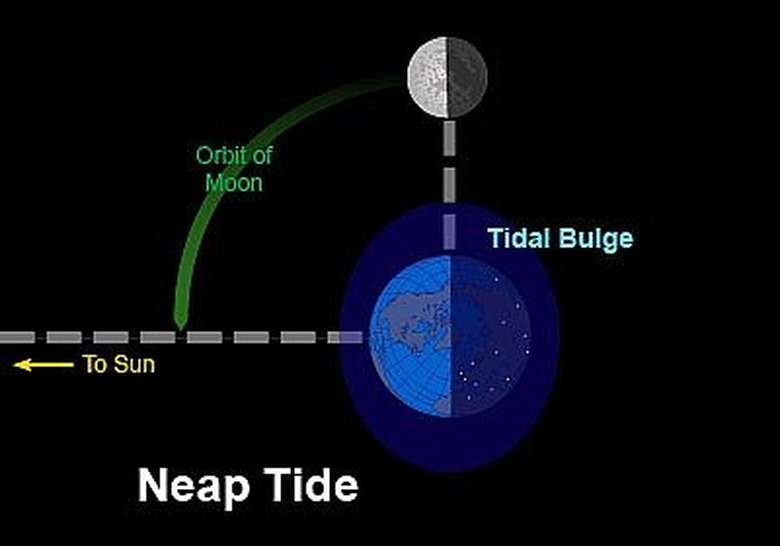How To Understand Tides
Tides are the periodic rise and fall in the levels of surface water in oceans. Major lakes like the Great Lakes, also have tides, but those variations are in inches compared to feet, so this posting will look at the earth's seas. Tides are caused by the action of gravity from the sun and the moon on the earth. Since the sun is more than 360 times further from the earth than the moon, even though the moon is a lot smaller, the moon twice as much influence on the Earth's tides compared to the sun. Every 27.3 days, the earth and the moon revolve around a shared point, so the tidal pattern repeats the cycle in that time frame
Step 1
The pull of the moon's gravity is stronger on the side that faces the earth, and weaker on the opposite side, so the moon pulls the water into a bulge on the side that is closer creating a high tide. The highest tide does not occur when the moon is directly overhead, because the tidal uplift cannot keep up with the earth's rotation. Water has a lot of inertia, so the highest tide is delayed by about a quarter of the daily cycle, putting the highest tide at about an hour or more after the moon sets at a specific location. On the far side of the earth, the water piles up creating a tide there, which is not as large as the one closer to the moon. At right angles to the moon are the low tides. Due to the earth's rotation there are two low and high tides every day.
Step 2
Tides build to a maximum and fall to a minimum twice a month due to the interaction of the sun with the moon. Spring tides are those with the biggest difference between high and low. They occur just after every full and new moon where the pull of the sun on the earth is in line with the moon's gravity.
Step 3
Those with the smallest change in level are neap tides. Neap tides happen when the moon and sun pull at right angles to each other. Spring tides have their greatest variation between high and low at the equinoxes, usually 21 March 21st and 21 September 21st, when day and night are equal world wide.
Step 4
An ebb tide refers to the time that the sea level falls over the course of several hours. Slack tide or slack water is the point where the water turns. Flood tide refers to the period between slack and high tide.
Step 5
Tidal times vary due to local geography. In extreme case, such as in Panama City, Florida there is only a single low tide and high tide each day. In most of the world, the time between high and low tide is consistent, approximately 12 hours and 25 minutes, which is why the high and low tides seem to advance by an hour each morning and evening, but low tide is not always half way between them. In some places the flood tide rises quickly after a long period of several hours of low water. One of the most dramatic places in the world to watch a high tide is in the Bay of Fundy between the Canadian provinces of New Brunswick and Nova Scotia. There the high tide rolls in with on tidal bore, a wave that quickly travels up river against the prevailing current. The phenomenon is caused by the fact that the tide is funneled into a shallow narrow river from a broad bay. This area has some of the most dramatic differences in tidal height in the world.
TL;DR (Too Long; Didn't Read)
If you are boating, surfing or swimming, it's a good idea to get a local tide table.
Cite This Article
MLA
Suchecki, Paul M. J.. "How To Understand Tides" sciencing.com, https://www.sciencing.com/understand-tides-2343624/. 24 April 2017.
APA
Suchecki, Paul M. J.. (2017, April 24). How To Understand Tides. sciencing.com. Retrieved from https://www.sciencing.com/understand-tides-2343624/
Chicago
Suchecki, Paul M. J.. How To Understand Tides last modified March 24, 2022. https://www.sciencing.com/understand-tides-2343624/


